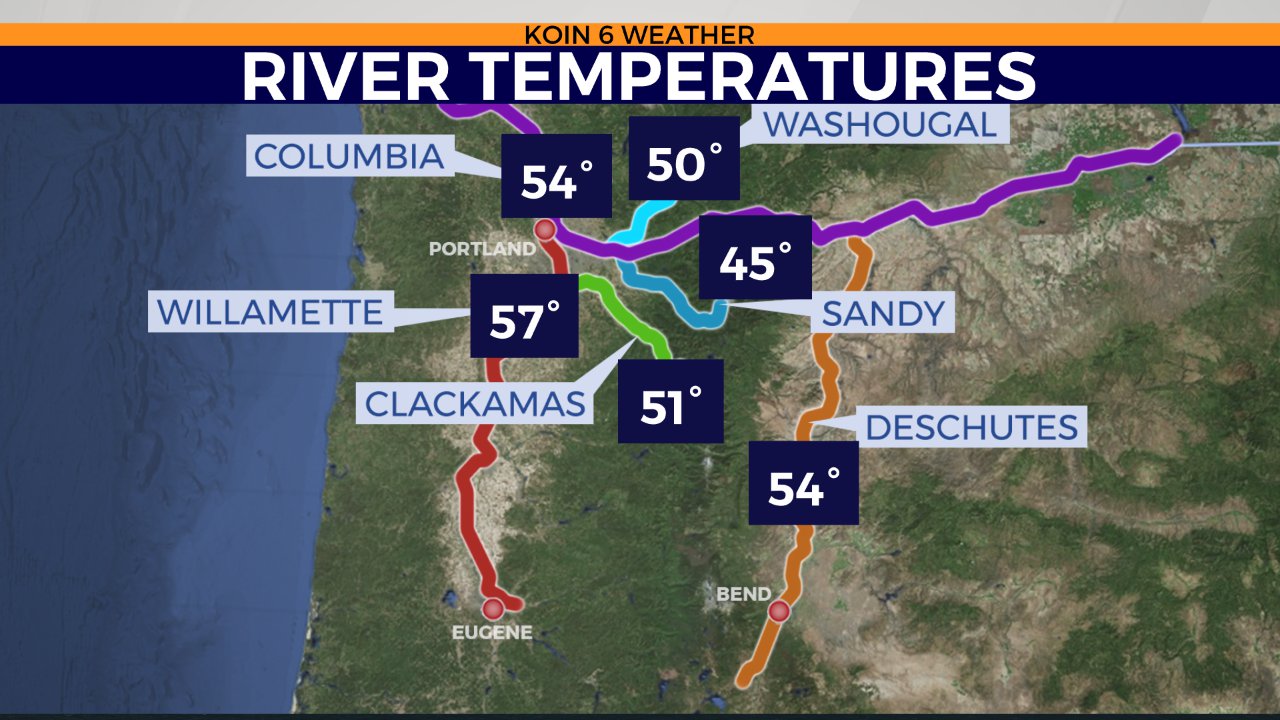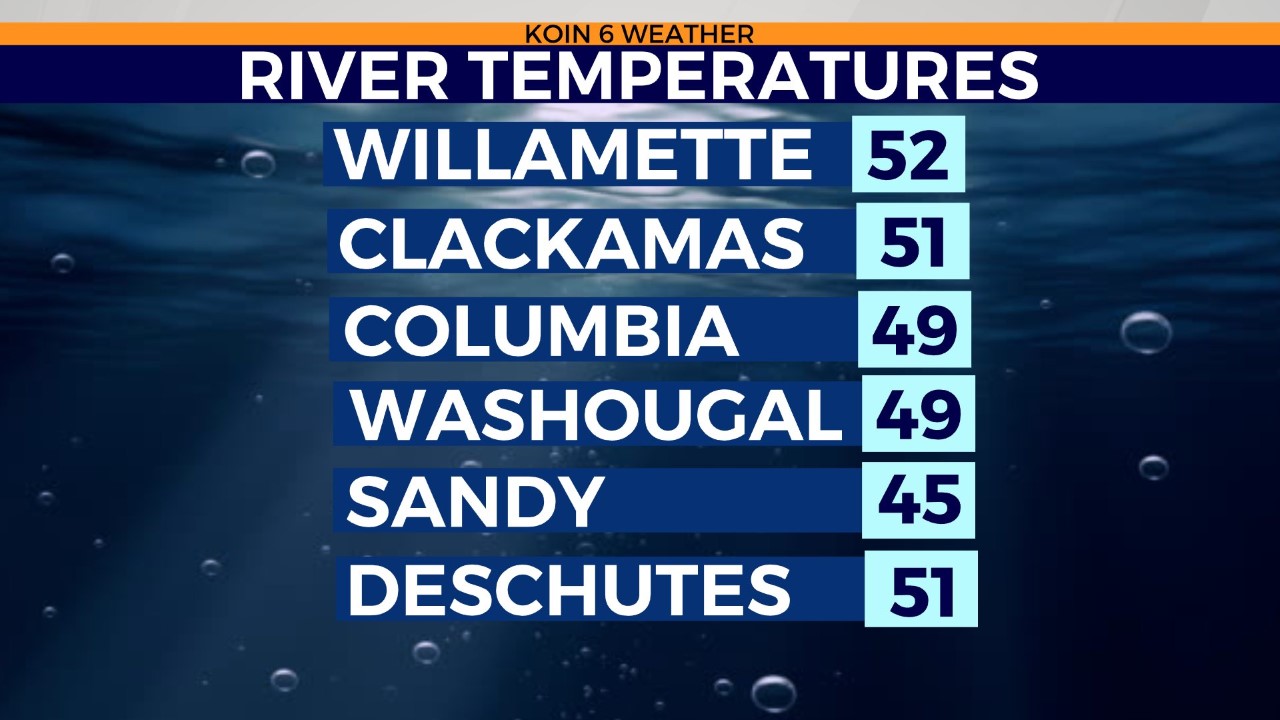PORTLAND, Ore. (KOIN) — We’re warming up around the Pacific Northwest as the summer nears.
There are some days that the temperatures are in the 80s and you’re just looking for a way to cool down. The way we do it out in nature is by enjoying the local beaches at our nearby rivers. This has been the way to cool down going all the way back through the books (history).
However, the time of the year makes a massive difference. River temperatures are still very cold in the spring and they can lead to quick dangers for your body if you’re not prepared for the cold water. This is why we are dedicating a weather lesson on this topic.

Let’s go!
First things first, you may be wondering why the river temperatures are so cold if the air temperature is warmer? What gives?
PROCESS

Both the air temperature and the water temperature are mainly a result of solar radiation. The sun is warming us up! Solar radiation is different from each season because of the length of daylight hours and the intensity of that solar radiation. The summer is going to be the king of the castle, allowing for temperatures to be warmer both on land and water.
However, water doesn’t heat up the same way that air does. When the sun is beaming down on that water, it will penetrate deeper and it doesn’t just strike the surface. Some of that heat should evaporate the water at the top too. Essentially, water will warm slower.
When you think about the properties of water, you may recognize that it is moving around and circulating. That will distribute the heat as it spreads, but it will take time. The characteristics of the river will make a difference when it comes to how quickly it warms too. Is it a shallow stream or is it a large river? When you think about the big ole ocean next to Oregon and Washington, this is part of the reason why it’s warmer in the winter and cooler in the summer near the water. The water takes longer to warm and cool.
There is another action around here that will cool down a river in the spring and you’ve guessed it, it’s snowmelt.
WHAT IS SNOWMELT?
SNOWMELT: water that comes from the melting of snow. It’s as basic as that.
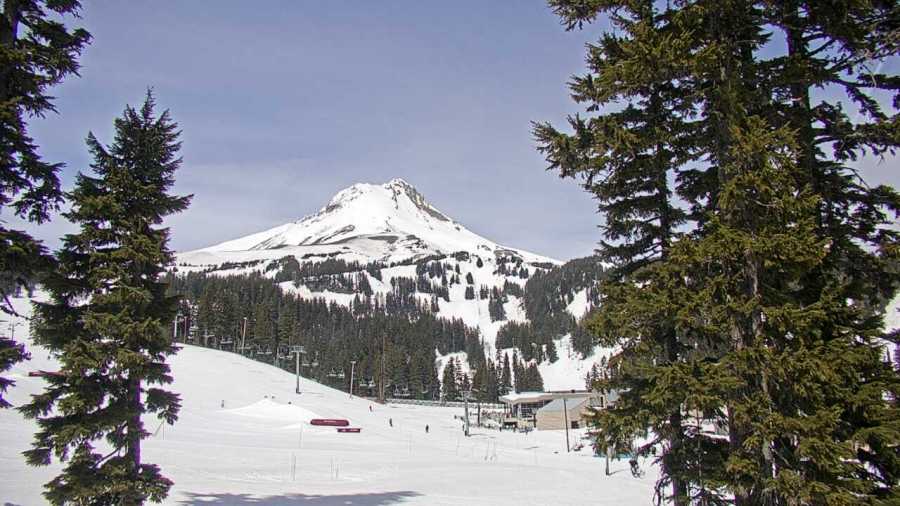
The snow from the winter will eventually melt from the solar radiation, running off into the local streams and rivers. This is an important part of the water cycle around here.
If you want to learn more about the water cycle, you can also check out this weather lesson. Check out the mountain during the peak summer compared to a few months prior in the spring.
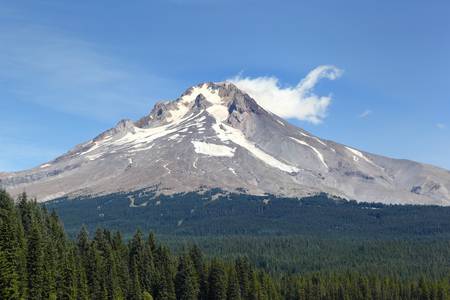
The lower elevations have surely given up the hope of keeping any sort of snow by the time we reach the summer. There are still some strips that are going to stick around because of the year round snowfields and glaciers of Mt. Hood.
Now once that snowmelt cycles to the rivers, it will add additional water to the rivers and this will help supply the necessary water that we need heading into the summer. Important for agriculture and many other factors. Below is a quote that was pulled from the USGS about the importance of snowpack.
Mountain snow fields act as natural reservoirs for many western United States water-supply systems, storing precipitation from the cool season, when most precipitation falls and forms snowpacks, until the warm season when most or all snowpacks melt and release water into rivers. As much as 75 percent of water supplies in the western states are derived from snowmelt.
U.S. Geological Survey
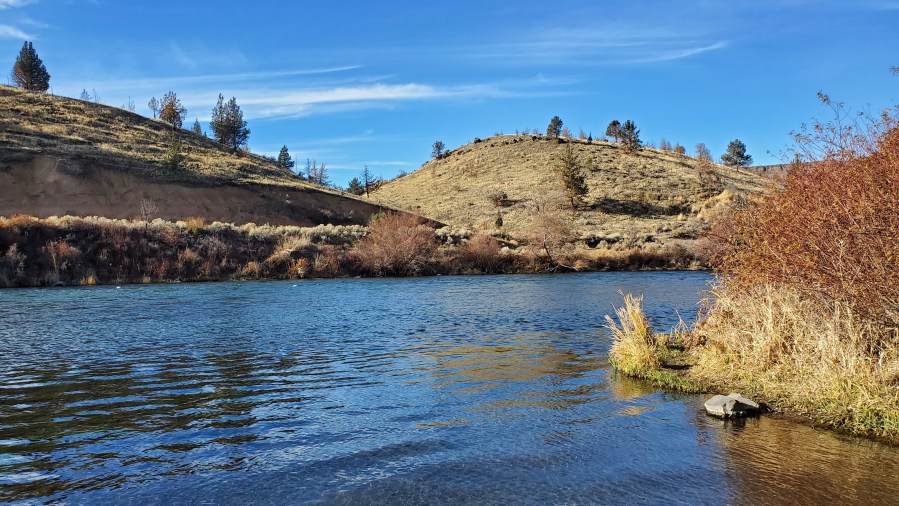
RIVER TEMPERATURE
You may see us use these graphics during our weather broadcasts. We want to make sure that during these springs months when the air temperatures are warm, that you are aware of how cold the water temperatures are.
These are a few examples of the river temperatures in the months of April and May! Many of the rivers will be in the lower 50s and even the 40s.
That is just too cold! There are real life threatening dangers when you do find yourself exposed to cold temperatures for an extended period of time. In some cases, it’s a lot shorter than what you may expect. When exposed to cold temperatures, your body begins to lose heat faster than what it takes for your body to create heat. Eventually your body uses the energy that is available and the body temperature starts to lower. This can happen when you are exposed to cold water and when you’re out in the cold for too long.
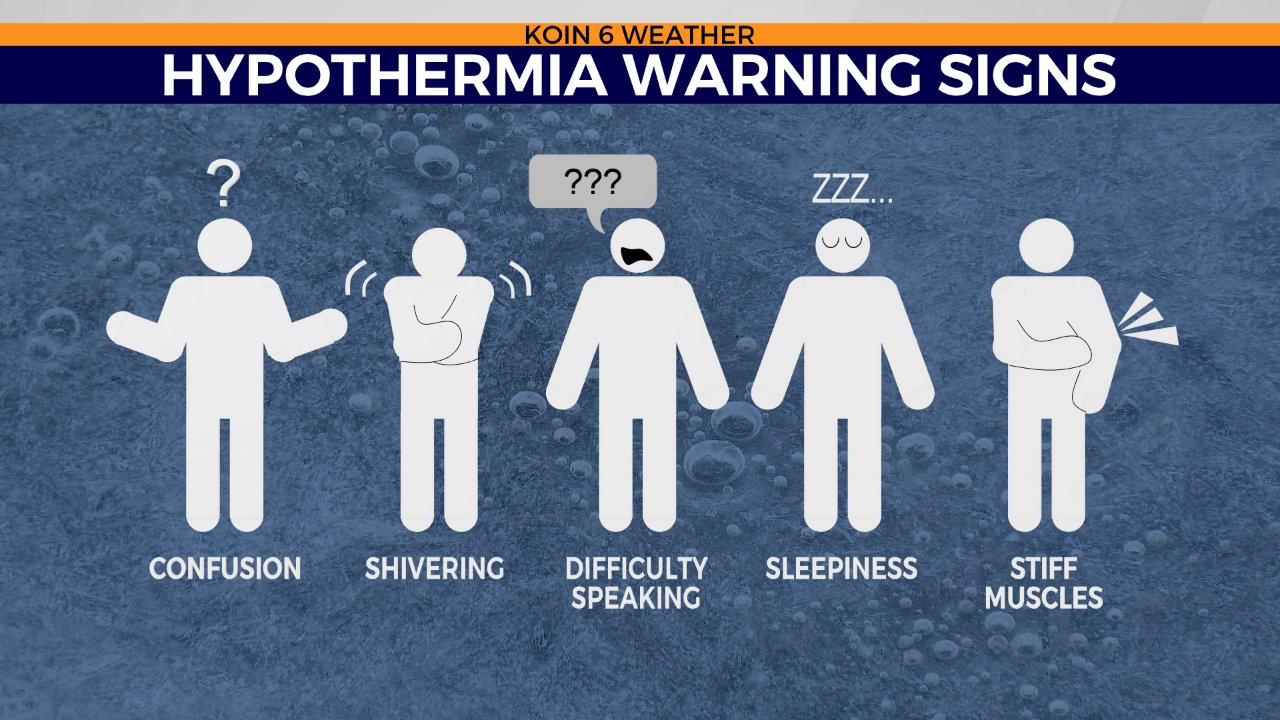
Cold water can also do something called, “cold water shock”, which will cause you to gasp. This is also very dangerous because it may lead to breathing problems and taking in water.
Wearing lifejackets is the number one way to remain safe in water. You can see folks wearing them out on the river in the video below.
